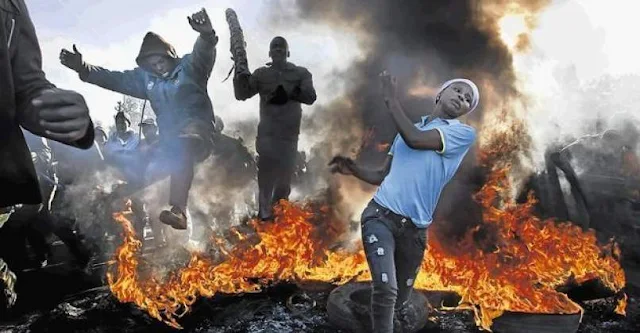Xenophobia’s re-emergence in South Africa that left several African national displaced and killed. The 2019 marks yet another shamef...
A number of African nationals in South Africa lost their lives and more than 200,000 were displaced during xenophobic attacks in South Africa 10 years ago. According to UNHCR 2018 report, it contended that there has been a steady increase in the expression of xenophobic sentiments at both the level of officials within the state, as well as in the popular discourse in the country. Foreign nationals have, yet again, been attacked, displaced and had their shops looted in South Africa. After 2018 melee attacks on foreigners, the government joined civil society and international organisations in trying to ensure that such bloodletting would never happen again. But, it has occurred again. Why? Firstly, both the government and civil society are culpable.
The Somali Community Council in Kwazul Natal had referred this xenophobic intimidation to the authority and relevant police offices last year in order for the incident to be addressed and properly mitigated before it spirals into mob violence. In May 2008 Pierre Matate, the co-ordinator of the KwaZulu-Natal Refugee Council, wrote to then eThekwini Mayor Obed Mlaba, Ministry of Home Affairs, the Office of the KwaZulu-Natal Premier, the Minister of Justice, and the Presidency, and others leaders, expressing concern about threats of mob violence against foreigners living in Durban and surrounding areas. There appeared to be little or no response from the authorities.
Savious Kwinika, from the Centre for African Journalists, contended that “politicians are desperate for votes, so in the tense fight to win over the electorate who are bearing the brunt of economic challenges such as poverty and joblessness. It has become fashionable to single out foreigners for South Africa’s economic woes. This view was reinforced by Marc Gbaffou, chairperson of the African Diaspora Forum (ADF). “We are definitely worried while getting closer to the general elections scheduled for 2019,” he said. “This is because based on past experience, foreign nationals have paid with their lives during such elections … Those politicians who have no tangible arguments to convince their electorate always take the shortcut by accusing foreign nationals. It’s a populist approach which seems to be working very well in South African especially African National Congress's politics.
The idea is to make community members believe that immigrants are the cause of their suffering. The repeated attacks on the Africans who are being singled out in these type of attacks since the past 10 years. Gbaffou has contended that the communities who protest because of poor service delivery are frustrated and “are taking it out on migrants. ''It can be any one of us here who comes across a crowd which is protesting … because you are from Zimbabwe, Ghana, Mozambique, Ivory Coast or Liberia, people decide to kill you.” The ADF maintained that South Africa was only interested in the African continent for business and investment purposes, but must “first accept the people who came here, before (any) talk about doing business”. Furthermore, a compassionate, humanitarian approach was required to understand their plight, and the South African Government must introduce legislation to protect migrants.
These related issues raised by the Human Rights Watch World Report is an indication of South African government’s failure to approve the draft National Action Plan to combat racism, racial discrimination, xenophobia and related intolerance, or provide a mechanism for justice and accountability for xenophobic crimes. Politicians also continued to promote a public xenophobic discourse with impunity. On 14 July 2017, Deputy Minister of Police Bongani Mkongi asked: “How can a city in South Africa be 80% foreign national? That is dangerous. South Africans have surrendered their own city to the foreigners.
VictimViolence Instigation: There is a continuous tendency among elements of disunity trying to deviate the genuine attention from serious topics such as Land by spreading false information. The people who don't want Africans to come together unite often misled black masses, whom the majority are so naive to the extent of inciting xenophobic violence. The social media ran by faceless profiles are busy at works spreading viral ''BREAKING NEWS'' to instigate xenophobia among African people themselves: African populace lack clairvoyance, as a result, people are being hypnotised by social media.
The solution required is to teach people not to react (share/like) to any fake content and the authority should recalibrate how xenophobia is covered, particularly how stories are told about migrants – their rights, suffering, and their relationship to the citizens around them. The way it’s currently done is doing more harm than good. South African coverage of migrants falls into what the president of the global Ethical Journalism Network, Aidan White, recently noted was a trend towards “victim journalism” in global migration coverage.











